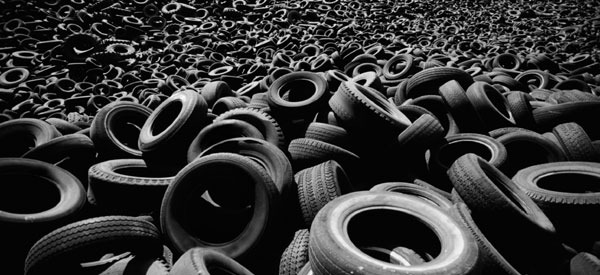Radial tires differ from traditional diagonal bias-ply tires in their construction, which minimizes tread wear and improves flexibility of the sidewall for better handling.
While tires may look simple they are actually made up of a series of layers of different materials. If we peeled back the tread in bias-ply tire one would see a nylon weave (these are the plies) beneath, running in a diagonal pattern meeting in the centerline of the face of the tire. The weave runs at an angle down the sidewalls to the bead — the part of the tire that fits on the wheel’s rim. Nylon ply is stronger than polyester but compresses and sets when under load especially when left for periods of time, resulting in “flat areas” on the tire. Due to the direction the ply runs on these tires, the sidewalls don’t bulge even if the tire is low. This design allows tread to wrap down over the sidewall because there is no transition point from the circumferential face to the
The average steel-belted radial gets about 100,000 miles (161,000 km) of wear, while the bias-ply tires are generally rated at about 30,000 miles (48,280 km).
Most of the tires on the road today are steel-belted radial tires.

